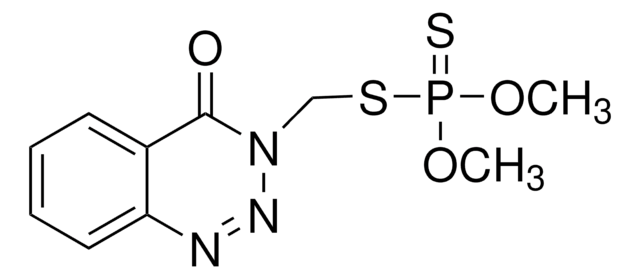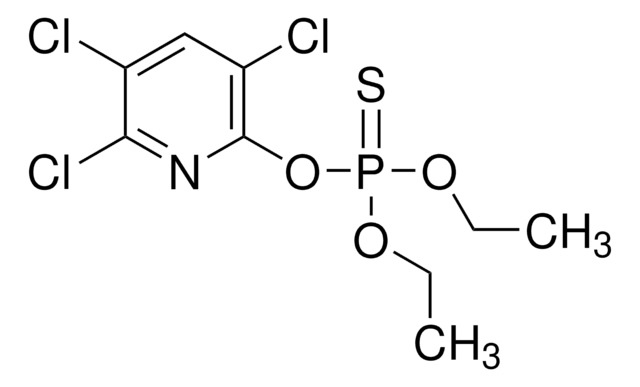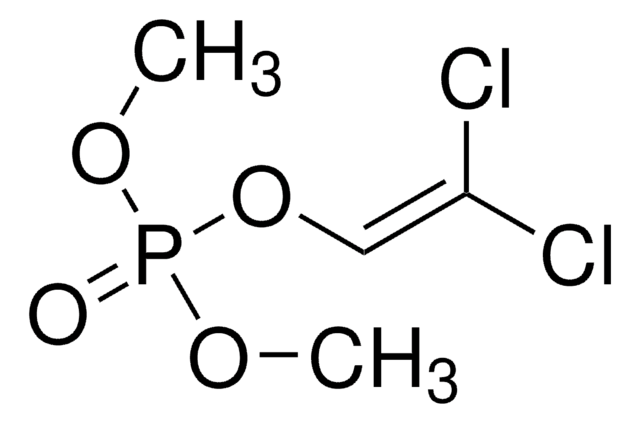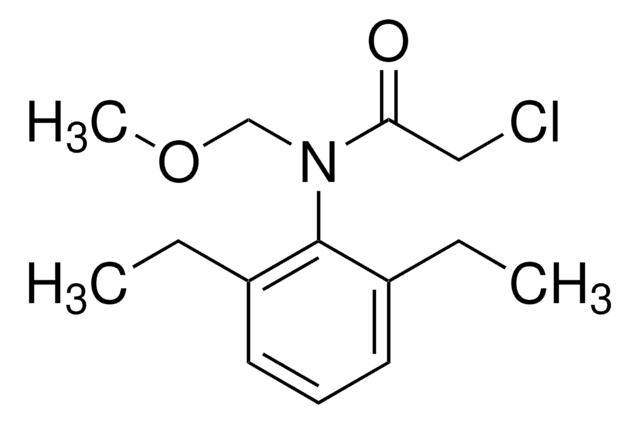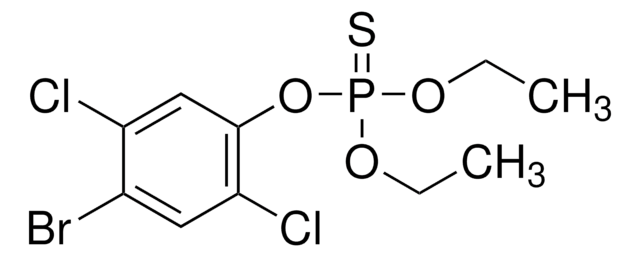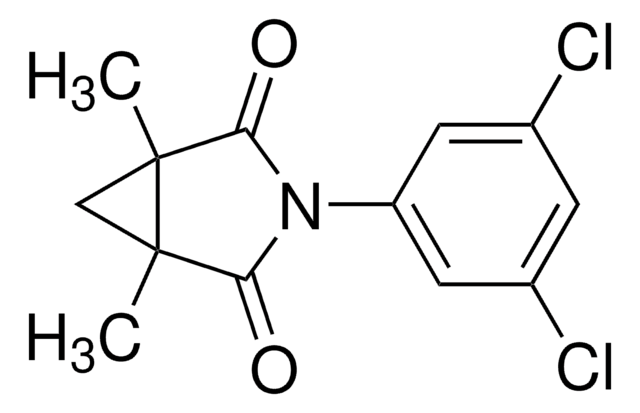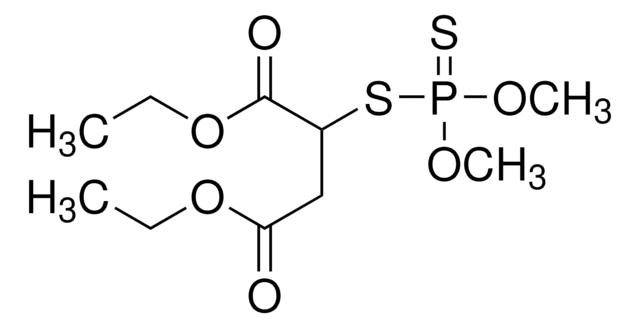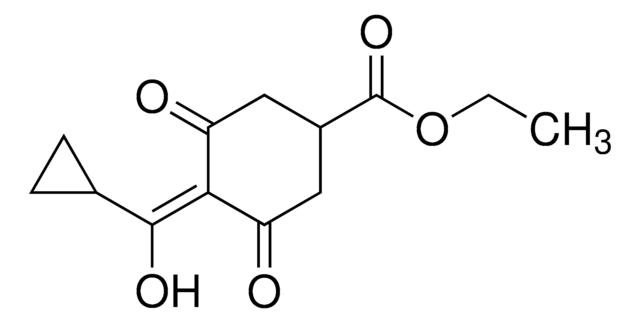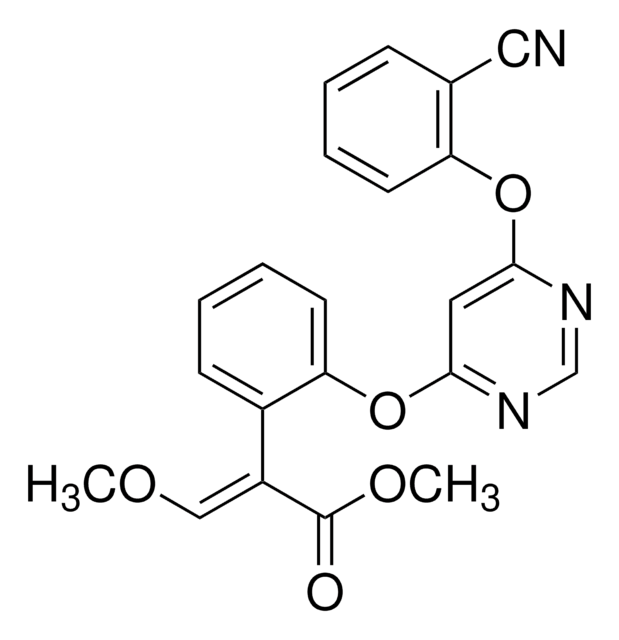45332
Azinphos-ethyl
PESTANAL®, analytical standard
About This Item
Produits recommandés
Qualité
analytical standard
Niveau de qualité
Gamme de produits
PESTANAL®
Durée de conservation
limited shelf life, expiry date on the label
Technique(s)
HPLC: suitable
gas chromatography (GC): suitable
Application(s)
agriculture
environmental
Format
neat
Température de stockage
2-8°C
Chaîne SMILES
CCOP(=S)(OCC)SCN1N=Nc2ccccc2C1=O
InChI
1S/C12H16N3O3PS2/c1-3-17-19(20,18-4-2)21-9-15-12(16)10-7-5-6-8-11(10)13-14-15/h5-8H,3-4,9H2,1-2H3
Clé InChI
RQVGAIADHNPSME-UHFFFAOYSA-N
Vous recherchez des produits similaires ? Visite Guide de comparaison des produits
Description générale
Application
- Water samples by solid phase extraction (SPE) and ultra-high performance liquid chromatography-quadrupole time-of-flight mass spectrometry (UHPLC-QqTOF-MS).
- Cereals by QuEChERS (quick, easy, cheap, effective, rugged, and safe) extraction and gas chromatography-triple quadrupole mass spectrometry (GC-QqQ MS/MS).
- Fruits and vegetables and neutraceuticals derived from grape seed extracts by QuEChERS extraction and UHPLC-QqQ MS/MS with electrospray ionization (ESI) source and multiple reaction monitoring (MRM) mode of detection.
- Seawater samples by SPE and LC-ESI-MS/MS.
Informations légales
Mention d'avertissement
Danger
Mentions de danger
Conseils de prudence
Classification des risques
Acute Tox. 2 Oral - Acute Tox. 3 Dermal - Aquatic Acute 1 - Aquatic Chronic 1
Code de la classe de stockage
6.1A - Combustible, acute toxic Cat. 1 and 2 / very toxic hazardous materials
Classe de danger pour l'eau (WGK)
WGK 3
Point d'éclair (°F)
Not applicable
Point d'éclair (°C)
Not applicable
Équipement de protection individuelle
dust mask type N95 (US), Eyeshields, Faceshields, Gloves, type P2 (EN 143) respirator cartridges
Faites votre choix parmi les versions les plus récentes :
Déjà en possession de ce produit ?
Retrouvez la documentation relative aux produits que vous avez récemment achetés dans la Bibliothèque de documents.
Les clients ont également consulté
Protocoles
analytical standard; Tokuthion, technical grade, pkg of 50 mg; Crotoxyphos; Phorate; Azinphos-ethyl; Diazinon; Azinphos-methyl; Demeton-O; Dimethoate; Chlorpyrifos-methyl
Test your food for fipronil contamination using our analytical standards, certified reference materials, solvents, and columns for analysis.
Notre équipe de scientifiques dispose d'une expérience dans tous les secteurs de la recherche, notamment en sciences de la vie, science des matériaux, synthèse chimique, chromatographie, analyse et dans de nombreux autres domaines..
Contacter notre Service technique